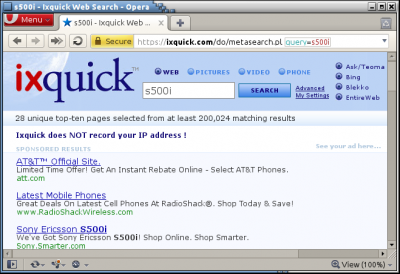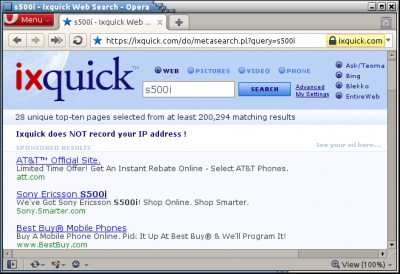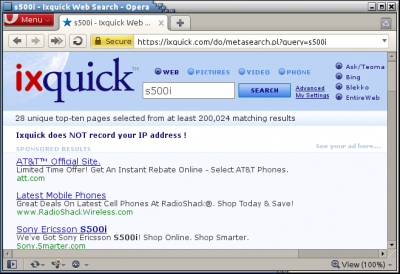I thought I needed an associative array of SVG color keywords. I couldn’t find one, so I created this. Enjoy.
// see http://www.w3.org/TR/SVG/types.html#ColorKeywords
var SVGColors = new Object();
SVGColors['aliceblue'] = [240,248,255];
SVGColors['antiquewhite'] = [250,235,215];
SVGColors['aqua'] = [0,255,255];
SVGColors['aquamarine'] = [127,255,212];
SVGColors['azure'] = [240,255,255];
SVGColors['beige'] = [245,245,220];
SVGColors['bisque'] = [255,228,196];
SVGColors['black'] = [0,0,0];
SVGColors['blanchedalmond'] = [255,235,205];
SVGColors['blue'] = [0,0,255];
SVGColors['blueviolet'] = [138,43,226];
SVGColors['brown'] = [165,42,42];
SVGColors['burlywood'] = [222,184,135];
SVGColors['cadetblue'] = [95,158,160];
SVGColors['chartreuse'] = [127,255,0];
SVGColors['chocolate'] = [210,105,30];
SVGColors['coral'] = [255,127,80];
SVGColors['cornflowerblue'] = [100,149,237];
SVGColors['cornsilk'] = [255,248,220];
SVGColors['crimson'] = [220,20,60];
SVGColors['cyan'] = [0,255,255];
SVGColors['darkblue'] = [0,0,139];
SVGColors['darkcyan'] = [0,139,139];
SVGColors['darkgoldenrod'] = [184,134,11];
SVGColors['darkgray'] = [169,169,169];
SVGColors['darkgreen'] = [0,100,0];
SVGColors['darkgrey'] = [169,169,169];
SVGColors['darkkhaki'] = [189,183,107];
SVGColors['darkmagenta'] = [139,0,139];
SVGColors['darkolivegreen'] = [85,107,47];
SVGColors['darkorange'] = [255,140,0];
SVGColors['darkorchid'] = [153,50,204];
SVGColors['darkred'] = [139,0,0];
SVGColors['darksalmon'] = [233,150,122];
SVGColors['darkseagreen'] = [143,188,143];
SVGColors['darkslateblue'] = [72,61,139];
SVGColors['darkslategray'] = [47,79,79];
SVGColors['darkslategrey'] = [47,79,79];
SVGColors['darkturquoise'] = [0,206,209];
SVGColors['darkviolet'] = [148,0,211];
SVGColors['deeppink'] = [255,20,147];
SVGColors['deepskyblue'] = [0,191,255];
SVGColors['dimgray'] = [105,105,105];
SVGColors['dimgrey'] = [105,105,105];
SVGColors['dodgerblue'] = [30,144,255];
SVGColors['firebrick'] = [178,34,34];
SVGColors['floralwhite'] = [255,250,240];
SVGColors['forestgreen'] = [34,139,34];
SVGColors['fuchsia'] = [255,0,255];
SVGColors['gainsboro'] = [220,220,220];
SVGColors['ghostwhite'] = [248,248,255];
SVGColors['gold'] = [255,215,0];
SVGColors['goldenrod'] = [218,165,32];
SVGColors['gray'] = [128,128,128];
SVGColors['green'] = [0,128,0];
SVGColors['greenyellow'] = [173,255,47];
SVGColors['grey'] = [128,128,128];
SVGColors['honeydew'] = [240,255,240];
SVGColors['hotpink'] = [255,105,180];
SVGColors['indianred'] = [205,92,92];
SVGColors['indigo'] = [75,0,130];
SVGColors['ivory'] = [255,255,240];
SVGColors['khaki'] = [240,230,140];
SVGColors['lavender'] = [230,230,250];
SVGColors['lavenderblush'] = [255,240,245];
SVGColors['lawngreen'] = [124,252,0];
SVGColors['lemonchiffon'] = [255,250,205];
SVGColors['lightblue'] = [173,216,230];
SVGColors['lightcoral'] = [240,128,128];
SVGColors['lightcyan'] = [224,255,255];
SVGColors['lightgoldenrodyellow'] = [250,250,210];
SVGColors['lightgray'] = [211,211,211];
SVGColors['lightgreen'] = [144,238,144];
SVGColors['lightgrey'] = [211,211,211];
SVGColors['lightpink'] = [255,182,193];
SVGColors['lightsalmon'] = [255,160,122];
SVGColors['lightseagreen'] = [32,178,170];
SVGColors['lightskyblue'] = [135,206,250];
SVGColors['lightslategray'] = [119,136,153];
SVGColors['lightslategrey'] = [119,136,153];
SVGColors['lightsteelblue'] = [176,196,222];
SVGColors['lightyellow'] = [255,255,224];
SVGColors['lime'] = [0,255,0];
SVGColors['limegreen'] = [50,205,50];
SVGColors['linen'] = [250,240,230];
SVGColors['magenta'] = [255,0,255];
SVGColors['maroon'] = [128,0,0];
SVGColors['mediumaquamarine'] = [102,205,170];
SVGColors['mediumblue'] = [0,0,205];
SVGColors['mediumorchid'] = [186,85,211];
SVGColors['mediumpurple'] = [147,112,219];
SVGColors['mediumseagreen'] = [60,179,113];
SVGColors['mediumslateblue'] = [123,104,238];
SVGColors['mediumspringgreen'] = [0,250,154];
SVGColors['mediumturquoise'] = [72,209,204];
SVGColors['mediumvioletred'] = [199,21,133];
SVGColors['midnightblue'] = [25,25,112];
SVGColors['mintcream'] = [245,255,250];
SVGColors['mistyrose'] = [255,228,225];
SVGColors['moccasin'] = [255,228,181];
SVGColors['navajowhite'] = [255,222,173];
SVGColors['navy'] = [0,0,128];
SVGColors['oldlace'] = [253,245,230];
SVGColors['olive'] = [128,128,0];
SVGColors['olivedrab'] = [107,142,35];
SVGColors['orange'] = [255,165,0];
SVGColors['orangered'] = [255,69,0];
SVGColors['orchid'] = [218,112,214];
SVGColors['palegoldenrod'] = [238,232,170];
SVGColors['palegreen'] = [152,251,152];
SVGColors['paleturquoise'] = [175,238,238];
SVGColors['palevioletred'] = [219,112,147];
SVGColors['papayawhip'] = [255,239,213];
SVGColors['peachpuff'] = [255,218,185];
SVGColors['peru'] = [205,133,63];
SVGColors['pink'] = [255,192,203];
SVGColors['plum'] = [221,160,221];
SVGColors['powderblue'] = [176,224,230];
SVGColors['purple'] = [128,0,128];
SVGColors['red'] = [255,0,0];
SVGColors['rosybrown'] = [188,143,143];
SVGColors['royalblue'] = [65,105,225];
SVGColors['saddlebrown'] = [139,69,19];
SVGColors['salmon'] = [250,128,114];
SVGColors['sandybrown'] = [244,164,96];
SVGColors['seagreen'] = [46,139,87];
SVGColors['seashell'] = [255,245,238];
SVGColors['sienna'] = [160,82,45];
SVGColors['silver'] = [192,192,192];
SVGColors['skyblue'] = [135,206,235];
SVGColors['slateblue'] = [106,90,205];
SVGColors['slategray'] = [112,128,144];
SVGColors['slategrey'] = [112,128,144];
SVGColors['snow'] = [255,250,250];
SVGColors['springgreen'] = [0,255,127];
SVGColors['steelblue'] = [70,130,180];
SVGColors['tan'] = [210,180,140];
SVGColors['teal'] = [0,128,128];
SVGColors['thistle'] = [216,191,216];
SVGColors['tomato'] = [255,99,71];
SVGColors['turquoise'] = [64,224,208];
SVGColors['violet'] = [238,130,238];
SVGColors['wheat'] = [245,222,179];
SVGColors['white'] = [255,255,255];
SVGColors['whitesmoke'] = [245,245,245];
SVGColors['yellow'] = [255,255,0];
SVGColors['yellowgreen'] = [154,205,50];



